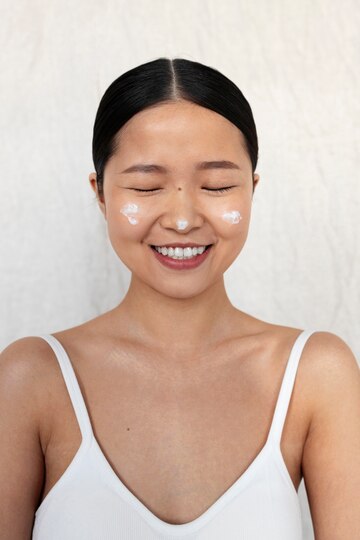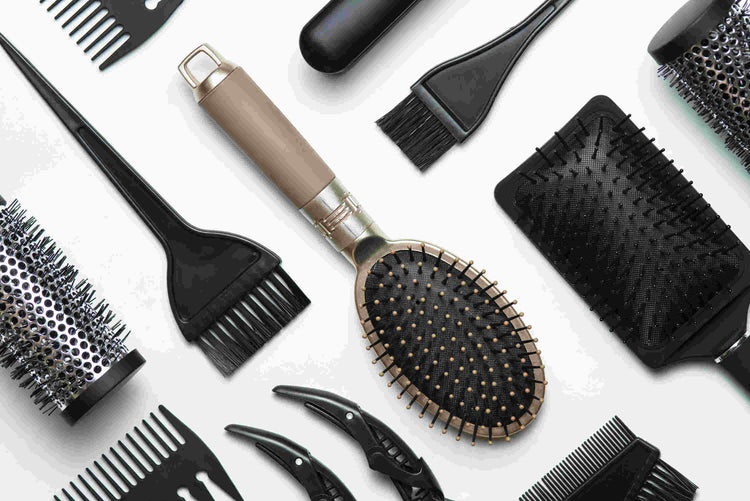The 6 Best Foot Creams for Dry and Cracked Heels


Most of us have experienced the discomfort of dry and cracked heels at one point or another. It's more than just a cosmetic issue; dry heels can significantly affect your quality of life. According to Dr. Sarah Williams, a podiatrist with over two decades of experience, "Ignoring dry and cracked heels could potentially lead to severe issues such as fissures, infections, and in extreme cases, even mobility problems."
Let's not forget the discomfort that cracked heels bring to daily life—wearing shoes becomes painful, walking a chore, and let's not even talk about the stabbing pain when standing on tiptoe. For many, the discomfort evolves into a constant distraction, making it difficult to focus on tasks and be productive. This seemingly minor issue can turn your everyday routine into a struggle.
The skin on our feet is naturally dry, unlike the skin on the rest of the body. The skin on the heel doesn't have sebaceous glands, which produce sebum, or oil, making it susceptible to drying out and cracking. If left unattended, these cracks can become deeper and infected, leading to potential health problems. Even more concerning, for individuals with diabetes or compromised immune systems, untreated dry and cracked heels can lead to more severe complications.
Many people underestimate the importance of proper foot care, often relegating it to the occasional pedicure or hurriedly applying lotion when the condition becomes unbearable. Dr. Emily Brown, a leading dermatologist, couldn't stress enough the importance of foot care: "Your feet support your entire body, and it's high time they receive the attention they deserve."
Proper foot care involves more than merely slathering on some lotion now and then. It's about creating a routine that involves cleaning, moisturising, and inspecting your feet regularly. Let's not forget the role that a good, supportive pair of shoes plays in maintaining the health of your feet. Poorly fitting shoes can exacerbate the problem, contributing to more severe dryness and cracking.
Regular exfoliation to remove dead skin cells, followed by the application of a foot cream rich in essential oils and natural moisturisers like shea butter or coconut oil, can go a long way in keeping your feet healthy. For those already suffering from dry and cracked heels, medicated creams containing urea can provide effective relief.
It's not just about treatment but prevention. Proper foot care should be a daily habit, just like brushing your teeth or washing your face. And if problems persist or worsen, it's crucial to consult a healthcare professional for targeted treatment options. After all, our feet carry us through life; it's high time we return the favour.
When it comes to foot creams, the ingredients can make or break their effectiveness. Dr. Sarah Williams advises, "Picking the right foot cream isn't just about grabbing the first thing off the shelf; it's about understanding what each ingredient does." With a myriad of products on the market, all promising miraculous results, it's crucial to understand what goes into these creams.
Active ingredients are the substances in foot creams specifically designed to treat dry, cracked skin. They are the heavy lifters, so to speak. They come in various forms, including chemical compounds, oils, and vitamins, each contributing in unique ways to the moisturisation and repair of the foot’s skin.
Secondary ingredients, on the other hand, support the active ingredients. They help with the cream's consistency, shelf life, and even scent. However, this does not mean they are any less important; in fact, they often have their own set of skin-benefiting properties.
Urea is an active ingredient you'll often find in medicated foot creams. It's incredibly effective for treating dry, calloused, and cracked heels. It works by breaking down dead skin cells, making it easier for moisture to penetrate the skin. "Urea is like a super-moisturiser that not only hydrates the skin but also exfoliates it, providing a two-in-one action," says Dr. Emily Brown. It's particularly useful for people who have severe dryness associated with conditions like eczema or psoriasis.
Lactic acid serves a dual purpose: it hydrates and exfoliates. It's an alpha hydroxy acid (AHA) that helps break down dead skin, making it easier for moisturising ingredients to penetrate and hydrate the fresh layer underneath. "Lactic acid is particularly good for softening the thick, scaly patches that can develop on feet," says Dr. Jane Murphy, a renowned dermatologist.
Shea butter is a secondary ingredient that plays a vital role in the overall effectiveness of foot creams. It's a fat extracted from the nut of the African shea tree and is known for its moisturising and anti-inflammatory properties. Shea butter forms a breathable, water-resistant film on the skin, sealing in the active ingredients and moisture. "Shea butter is excellent for hydration, and it's often included in foot creams for its ability to lock in moisture," notes Dr. Sarah Williams.
Ultimately, when choosing a foot cream, aim for one that contains a combination of these effective active and secondary ingredients. A balanced formulation can offer the best of both worlds: not only treating but also preventing dry and cracked heels. And remember, if you're dealing with persistent issues, consult a healthcare professional for targeted advice.

Your feet carry you through life, so they deserve a little TLC. Here are the reviews of the top 6 foot creams that can provide ultimate comfort for dry, cracked heels. These recommendations are backed by user reviews as well as expert insights.

"I've tried multiple foot creams, and O'Keeffe's is the best by far! My heels went from cracked and painful to smooth and hydrated in just a week." - Emily S.
"It's non-greasy and soaks in quickly. A little goes a long way, making it economical too." - Mark T.

"This cream has been a game-changer for my dry, cracked heels. I love that it's fragrance-free and doesn't irritate my skin." - Sarah W.
"After using this for a month, my feet are much softer, and the dry patches are gone." - Alex R.

"The cooling sensation is incredible! It provides instant relief for my tired feet after a long day." - Karen M.
"My heels were a mess, but this cream has restored them to near perfection. I also love the soothing effect." - Tom N.
From creams that provide instant relief to those that offer deep hydration, the market is brimming with options for everyone. So whether you're dealing with mild dryness or severe cracks, there's a foot cream that can offer your heels the comfort they desperately need.

"This foot cream is amazing! It's incredibly hydrating and the coconut scent is just divine." - Natalie L.
"I love that it's made from natural ingredients and it really moisturizes my dry feet." - Sean D.

"The AHA in this foot cream has helped smooth my feet like no other cream has. Plus, it's fragrance-free which is great for my sensitive skin." - Jenny S.
"I saw a noticeable difference within days of using this product. My heels are no longer cracked and feel a lot smoother." - Rick M.

"This foot cream is fantastic! My feet feel so much softer, and I love that it's free of irritating fragrances." - Carrie H.
"It’s effective yet gentle enough for daily use. My feet have never felt better." - Miguel G.
With these reviews, you now have a range of options to give your feet the love and care they deserve. From natural formulations to scientifically-backed ingredients, there's a foot cream for every foot care need.
This search topic likely reflects your concerns about cracked heels. Fissures can be painful, unattractive, and in severe cases, can cause bleeding. While foot creams can be a part of the solution, this area may also explore options like pedicures, overnight treatments with oils, and even medicated bandages designed for heel fissures.
If you're wondering how prevalent this issue is, you're not alone. Dry skin on the feet is a common issue, often made worse by factors like cold weather, hot showers, and skin irritants. The topic could explore the demographics most affected by this condition, as well as daily habits that can either mitigate or exacerbate the issue.
This topic indicates your interest in finding foot care products that are made with natural ingredients, possibly due to concerns about chemicals, sustainability, or skin sensitivity. Natural foot creams often feature ingredients like shea butter, essential oils, and herbal extracts that can provide relief without synthetic additives.
Your search for fast-acting foot creams suggests you're looking for a quick solution to dry, cracked heels or other foot issues. Whether it's a special occasion or you're just tired of dealing with the discomfort, fast-acting foot creams often contain potent active ingredients designed to provide rapid relief.
This search likely reflects concerns about how diabetes can affect foot health. Diabetic foot creams are formulated to address issues that are particularly common among those with diabetes, such as dry, cracked skin and poor circulation. They often include ingredients designed to both hydrate and promote blood flow, as well as antiseptic components to minimize infection risk.
This topic suggests you're interested in understanding the specific benefits of foot cream as compared to general body lotions. Foot creams usually contain higher concentrations of active ingredients aimed at treating harder skin on the heels and soles, whereas body lotions are more general-purpose moisturizers.
Results can speak louder than words or ingredient lists, and this search suggests you're looking for evidence of effectiveness. Before and after images can provide a concrete idea of a foot cream's efficacy over a certain period. However, it's important to remember that results can vary from person to person.
You're right to consider the long-term safety of daily foot cream application. While many foot creams are safe for daily use, this search topic could delve into potential concerns such as skin irritation, interactions with other medications or treatments, or issues stemming from overuse of certain active ingredients.
This search likely indicates that you're looking for foot creams that come highly recommended by healthcare professionals specializing in foot care. Podiatrist-recommended foot creams often contain clinically-proven ingredients that are effective for treating foot-related issues like dryness, cracks, and poor circulation.
This topic suggests you're interested in expert-backed practices for maintaining overall foot health. A good foot care routine often includes regular exfoliation, moisturizing, and inspection for any abnormalities. Special exercises or footwear recommendations may also be a part of an expert-advised foot care routine.
Preventing cracked heels is easier than treating them. Your search on this topic could be a proactive step to understand how to avoid the discomfort and potential complications associated with cracked heels. Effective prevention strategies often involve regular moisturization, proper footwear, and avoiding excessive weight-bearing activities on the feet.
Timing can be everything, and this search reflects an interest in optimizing the application of foot cream. The best time to apply foot cream can vary depending on the specific issue you're treating, but many experts recommend applying foot cream right before bed and covering your feet with socks to lock in moisture.
Your "People Also Ask" questions touch upon some common and important concerns about dry and cracked heels and the usage of foot creams. Here's a deeper look at each question:
Dry and cracked heels can be caused by a variety of factors, ranging from environmental conditions like cold weather or dry air, to personal habits such as wearing open-back shoes that expose the heel. Other causes include skin conditions like eczema and psoriasis, standing for long periods, and medical issues like diabetes which can affect skin health.
While cracked heels are often a result of external factors like climate or footwear, they can sometimes indicate underlying health problems. Conditions such as diabetes, thyroid issues, and certain skin disorders can manifest symptoms in the feet, including dryness and cracking. If you have persistent issues with cracked heels, it might be advisable to consult a healthcare professional for a full evaluation.
Foot creams contain a variety of active ingredients designed to moisturize, exfoliate, and heal. Common ingredients include urea, lactic acid, and salicylic acid for exfoliation; shea butter, lanolin, and glycerin for moisturization; and sometimes antifungal or antibacterial agents for treating infections. The exact ingredients can vary depending on the specific issues the cream is formulated to address.
Yes, it is possible for foot cream ingredients to cause allergic reactions in some individuals. Ingredients like fragrances, preservatives, and certain plant extracts can cause irritation or allergies. It's advisable to perform a patch test by applying a small amount of the cream to a discreet area of your skin and observing for any adverse reactions over a 24-hour period.
The frequency with which you should apply foot cream can depend on several factors, including the severity of your dry skin and the instructions provided by the product. Generally speaking, most foot creams can be applied once or twice daily. For extremely dry and cracked heels, a more frequent application or overnight treatment may be beneficial.
Foot creams are formulated to treat the thick, rough skin on the feet, so they might be too strong for other areas of the body with thinner, more delicate skin. However, some people do use foot creams on areas like the elbows or knees, which can also become very dry. Always do a patch test first to ensure the product won't irritate your skin.
The time required for a foot cream to show visible results can vary widely based on the ingredients and the condition of your skin. Some people see improvements in as little as a few days, while others may need a couple of weeks of consistent use. It's essential to follow the product's guidelines for the best results.
Side effects from using foot cream are generally rare but can include irritation, redness, or allergic reactions to specific ingredients. Always read the ingredient list and perform a patch test if you have sensitive skin or allergies. If irritation persists, discontinue use and consult a healthcare provider.
Many healthcare providers, including dermatologists and podiatrists, do recommend the use of foot creams for treating dry, cracked heels and other foot-related skin issues. These creams can often complement other treatments and contribute to overall foot health.
If you're looking for alternatives to foot creams, options include natural oils (like coconut or olive oil), petroleum jelly, and even DIY home remedies using ingredients like honey or aloe vera. Some people also use humidifiers to add moisture to the air, which can help with dry skin.
Besides foot creams, there are several other treatments for dry and cracked heels. Petroleum jelly, natural oils, and even some DIY home remedies like honey and oatmeal masks can be effective. "In severe cases, medical treatments such as prescription ointments or even minor surgical procedures may be required," adds Dr. George Bennett, a podiatric surgeon based in Leeds.

For those of us in the UK who have been tackling the ever-persistent issue of dry and cracked heels, today marks the day when we finally get down to the nitty-gritty. With insights from some of the UK's leading healthcare professionals, we're putting an end to the problem and stepping forward—quite literally—with renewed confidence. Soft, crack-free heels aren't just a summertime desire; they're a year-round necessity that could boost not only your confidence but also your overall health.
"If you're unaware of what's causing the cracks, you're essentially shooting in the dark with treatments," Dr. Katherine Rutherford, a renowned dermatologist in London. It's the first and most crucial step. Environmental factors like cold winter air or an unusually dry season can be just as impactful as health issues like diabetes or thyroid problems. "Don't neglect underlying health conditions when it comes to foot care; they're often interconnected," warns Dr. Rutherford.
The next line of action is usually the application of foot creams, especially those that come recommended by healthcare professionals. A celebrated podiatrist based in Manchester, advises, "An effective foot cream serves as your first line of defence. Opt for something with active ingredients like urea or lactic acid, which not only moisturise but also exfoliate the skin."- Dr. Sophie Clark. A useful tip she adds is to apply the cream right after a shower when your skin is still damp; it helps lock in the moisture.
However, all foot creams are not created equal. The active ingredients differ and it's paramount to take note of them. Dr. Laura Edwards, a skin expert at the University of Edinburgh, suggests, "You should read labels diligently and be aware of ingredients that might cause allergies." This is particularly crucial for people who have sensitive skin or known allergies. As Dr. Alan Green, a well-known allergist, states, "Your skin might react to certain ingredients. Always perform a patch test before applying any cream generously." Dr. Green also encourages visiting an allergist if you have a history of skin allergies.
You're probably wondering how often you should apply your chosen foot cream. "The frequency of application varies from product to product, but a good rule of thumb is to apply at least twice a day for effective results." According to Dr. Patricia Scott, a well-regarded dermatologist in Birmingham. Now, the big question—can you use the foot cream on other body parts? "While foot creams are generally thicker and may contain higher concentrations of active ingredients, they can be used on other extremely dry areas like elbows or knees," explains Dr. Jessica Philips, a skin specialist. However, consult your healthcare provider if you find that the cream isn't producing the desired results or if you're experiencing any side effects, says Dr. Simon Daniels, a seasoned pharmacist.
Let's not forget, there's a plethora of alternatives to foot creams. Petroleum jelly and natural oils can work wonders for minor cracks, while more severe conditions may require medical intervention. Dr. George Bennett, a podiatric surgeon, shares that surgical procedures can sometimes be the most effective route. "Surgical removal of dead skin or calluses is reserved for extreme cases and is quite effective," he mentions.
To sum it up, if you're dealing with the nuisance of cracked heels, remember you're far from alone, especially here in the UK where the weather can be a significant factor. With the right advice, proper products, and if necessary, a professional consultation, soft, crack-free heels are well within your reach. "Foot health is not just about vanity; it's a crucial component of your overall health and well-being," says Dr. Bennett. So, armed with this comprehensive guide, take the right steps to enhance not just your foot health, but also your quality of life.








Plus get the inside scoop on our latest content and updates in our monthly newsletter.